LIDOCAINE OINTMENT - TOPICAL, MUCOUS MEMBRANE
PHONETIC PRONUNCIATION: (LYE-doe-kane)
GENERIC NAME(S): lidocaine
Uses
USES: Lidocaine is used to temporarily numb and relieve pain from minor burns (including sunburn), skin abrasions, insect bites, and other painful conditions affecting mucous membranes. Some lidocaine products are used to numb the lining of the mouth or throat before certain medical/dental procedures. It is also used to decrease pain while dentures are being fitted and while your gums are adjusting to the dentures. It should not be used long-term to decrease pain from poorly fitting dentures. Lidocaine belongs to a class of drugs called local anesthetics. This product should not be used to treat teething pain in infants and young children due to an increased risk of serious side effects. Talk to the doctor for more details and for other ways to treat teething pain.
How to use LIDOCAINE OINTMENT - TOPICAL, MUCOUS MEMBRANE
HOW TO USE: Read the Patient Information Leaflet if available from your pharmacist before you start using lidocaine and each time you get a refill. If you have any questions, ask your doctor or pharmacist. Before certain medical/dental procedures, this medication is usually applied by a health care professional. If you are applying this medication yourself, use as directed by your dentist or doctor. Avoid getting this medication in your eyes. Apply a thin layer, using the smallest amount needed to cover the affected area. The dosage is based on your medical condition and response to treatment. For children, the dosage is also based on age and weight. Do not increase your dose or use this drug more often or for longer than prescribed. Your condition will not improve any faster, and your risk of side effects will increase. If you are using lidocaine ointment to help relieve the pain from new dentures, apply the ointment with clean hands to all the surfaces of the dentures that touch your gums. To lessen the amount of lidocaine that may be swallowed, do not apply the ointment to the chewing surfaces of your dentures. Continue to consult your dentist regularly during the fitting process. Follow your dentist's instructions carefully. Wash your hands after use. When this medication is used in the mouth or throat, numbness may make swallowing difficult and increase your risk of swallowing the wrong way or choking. Do not chew gum or eat for 1 hour after using this product and while your mouth or throat is numb. It is especially important for children to not eat or chew gum for at least 1 hour after using this product. Be careful not to accidentally bite your tongue or mouth. If you are applying this medication to other mucous membranes or the skin, clean the affected area before use, if possible, and apply with clean hands as directed. For broken or burned skin, you may apply the ointment with a sterile gauze pad. Wash your hands after use unless you are treating an area on the hands. Lidocaine starts to numb the affected area within 5 minutes after application. If you are using this product before certain procedures, tell your doctor if the area does not feel numb or the numbness does not go away. If you are using this product to relieve pain/discomfort, tell your doctor if your condition lasts or gets worse.
Side Effects
Precautions
Interactions
Overdose
Images
Reviews
Faq for LIDOCAINE OINTMENT - TOPICAL, MUCOUS MEMBRANE
Lidocaine ointment is commonly used on mucous membranes to provide temporary pain relief or numbness. It can be used for conditions like mouth sores, sore throat, or anal fissures.
Lidocaine is a local anesthetic that works by blocking nerve signals in the area where it is applied. This blocks the sensation of pain or discomfort, providing relief.
You should clean the area with mild soap and warm water before applying the ointment. Then, apply a thin layer of the ointment to the affected area, making sure to gently rub it in. Avoid contact with eyes or open wounds.
The duration of Lidocaine ointment's effect can vary depending on the individual and the condition being treated. Generally, the effects last for around 1-2 hours. It is best to follow the instructions provided by your healthcare professional.
Some common side effects may include temporary numbness, tingling, redness, or mild burning at the application site. These are usually mild and go away on their own. However, if you experience severe or persistent side effects, it is recommended to consult your healthcare provider.
Lidocaine ointment is not recommended for use on open wounds or broken skin. It is specifically designed for mucous membranes and may not be safe or effective for other types of injuries.
Lidocaine ointment may be used on children under the guidance of a healthcare professional. It is important to follow the recommended dosage and application instructions specified for the child's age and condition.
It is always advisable to consult with a healthcare professional before using Lidocaine ointment during pregnancy or while breastfeeding. They can evaluate the potential risks and benefits specific to your situation.
Lidocaine ointment is generally considered safe, but it may interact with certain medications. It is essential to inform your healthcare provider about any other medications or supplements you are taking to avoid potential drug interactions.
Disclaimer
IMPORTANT: HOW TO USE THIS INFORMATION: This is a summary and does NOT have all possible information about this product. This information does not assure that this product is safe, effective, or appropriate for you. This information is not individual medical advice and does not substitute for the advice of your health care professional. Always ask your health care professional for complete information about this product and your specific health needs.


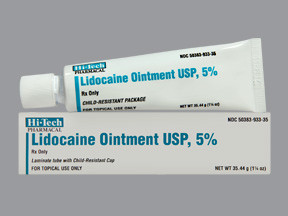
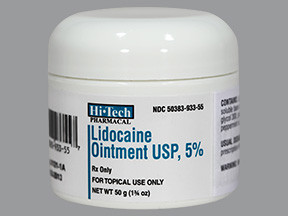
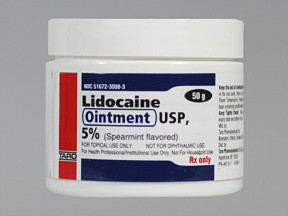
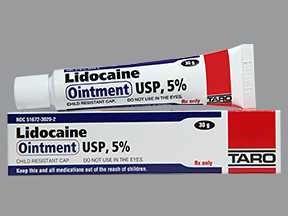
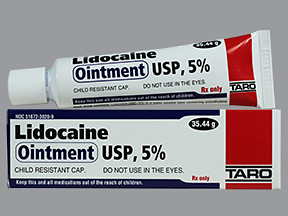
No Reviews Yet